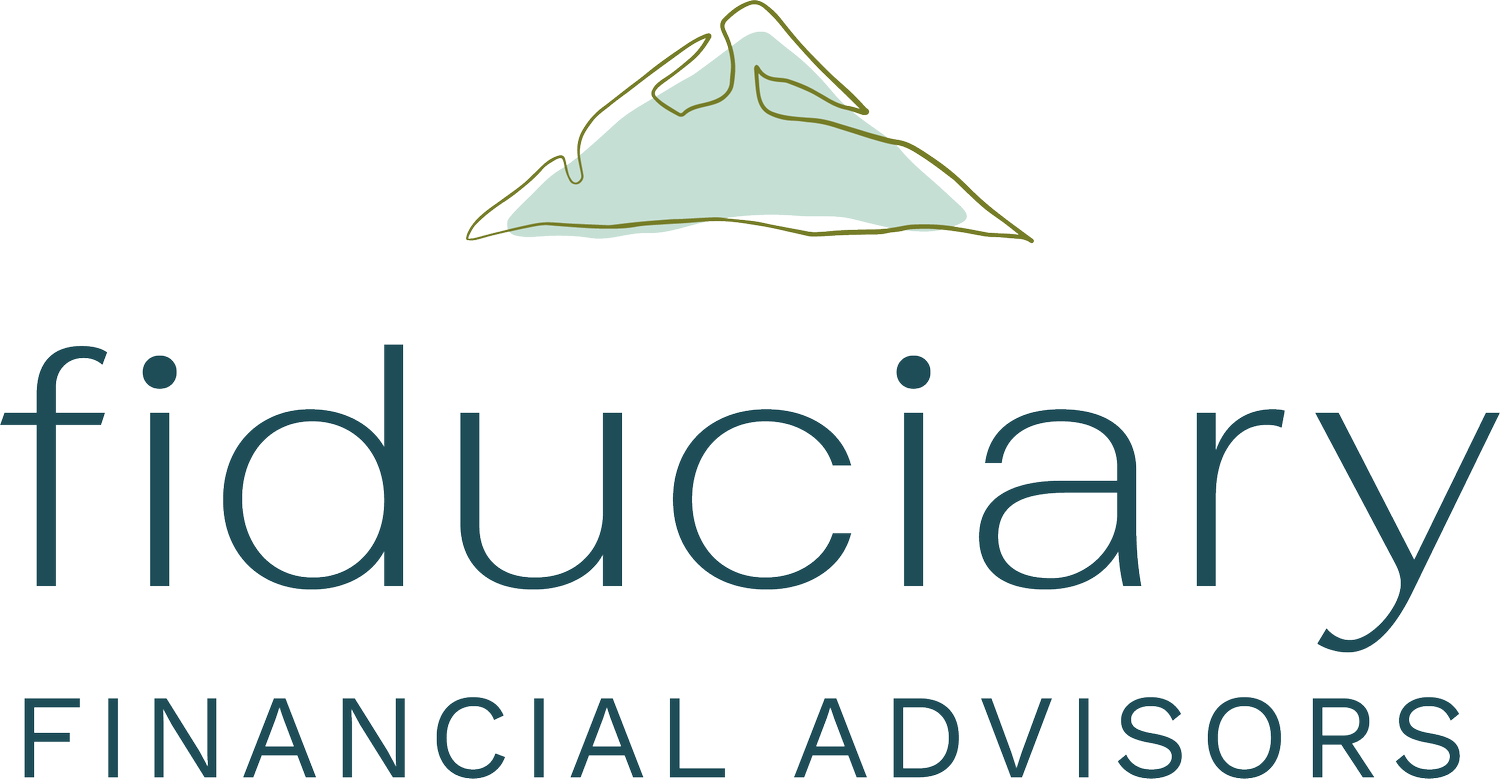5 Money Habits That Separate Wealth Builders from Wealth Drainers
In 2025, financial success looks different. The world is changing quickly, and there’s always a new shiny object trying to grab our attention. With the cost of living rising—and with AI-driven investing, digital banking, and new remote income streams—the gap between wealth builders and wealth drainers is wider than ever.
The good news? You still have control.
Millionaires aren’t made by the income they earn—they’re made by intentionality and the ability to consistently live below their means. Your daily money habits, not your salary, determine whether your finances grow or shrink.
Here are five money habits that separate people who build wealth from those who unknowingly drain it.
1. Automate Your Finances Instead of “Winging It”
Wealth builders use automation to make smart decisions effortless. Automatic transfers for savings, investments, and bills ensure their money goes where it should before they’re tempted to spend it.
When we review your cash-flow plan, we identify opportunities to automate your savings and investing in a tax-efficient way. This “backwards budgeting” gives you spending freedom while still keeping your long-term goals on track.
Wealth drainers, on the other hand, rely on memory or motivation. They move money “when they remember,” often missing savings opportunities. Keeping excess cash in your checking account makes lifestyle creep all too easy. Don’t let short-term spending derail long-term wealth.
2. Invest Consistently—Don’t Wait for the “Perfect Time”
A core wealth-building habit is consistency.
Wealth builders know that time in the market beats timing the market.
Wealth drainers wait for “the right moment,” losing years of compounding potential.
Do what you can now. Start somewhere—small steps taken today can turn into miles of progress later.
3. Track Your Net Worth — Not Just Your Income
Making more money is great—but using that money to move closer to your goals is what determines success.
Wealth builders track their net worth (assets minus debts) to measure real financial progress. I track my clients’ net worth each year so we can see whether they’re on course or need a strategic adjustment.
Wealth drainers focus only on income, celebrating raises while their expenses (and debt) grow even faster. A higher salary doesn’t hold as much value towards impacting your financial freedom if your net worth isn’t moving in the right direction.
4. Buy Time, Don’t Waste It
Time is the most valuable currency in 2025.
Wealth builders invest in tools, systems, or support that buy them time for higher-value activities—learning, strategizing, planning, or generating income.
Wealth drainers trade their time for temporary comfort, losing hours to busywork or endless scrolling.
Wealth grows where time compounds.
5. Live Below Your Means—Not for Appearances
In a world full of digital flexing and influencer lifestyles, restraint is rare—and powerful.
Wealth builders prioritize financial freedom over image. They practice intentional spending, save aggressively, and invest the difference.
Wealth drainers fall into lifestyle inflation, mistaking looking rich for being rich.
Define what “enough” looks like for your lifestyle, and invest anything above that threshold.
Build Habits, Not Just Income
Wealth isn’t about luck or even income—it’s about discipline, consistency, and systems that support intentional choices. Technology can help, but your habits ultimately determine your long-term financial independence.
Ask yourself: “Are my habits making my money work for me—or keeping me working for money?”
Start small. Automate one bill. Track your net worth. Set up a transfer to your investment account, even if it’s modest.
The gap between wealth builders and wealth drainers isn’t about opportunity—it’s about the daily choices that shape your future.
And remember: wealth is more than a bank account balance. It’s the ability to make your money work as efficiently as possible so you can design your life intentionally—reflecting your priorities, values, and goals. Small habits today create long-term flexibility and freedom.
Recent Articles Written by Kristiana:
Fiduciary Financial Advisors, LLC is a registered investment adviser and does not give legal or tax advice. Information presented is for educational purposes only and does not intend to make an offer or solicitation for the sale or purchase of any securities. The information contained herein has been obtained from a third-party source which is believed to be reliable but is subject to correction for error. Investments involve risk and are not guaranteed. Past performance is not a guarantee or representation of future results.
Fiduciary Financial Advisors does not give legal or tax advice. The information contained does not constitute a solicitation or offer to buy or sell any security and does not purport to be a complete statement of all material facts relating to the strategies and services mentioned.
Welcoming a New Family Member: A Personal and Financial Journey
As many of you know, my family just grew in exponential joy and also chaos — we welcomed Lucy Joy Daniels into our lives earlier this month. It’s an incredible, joyful milestone, full of excitement. Beyond the diapers and sleepless nights, though, I’ve been reflecting on the reality of the importance of thoughtful financial planning to protect and provide for our expanding family.
Having helped many clients through similar life transitions, I want to share some important steps I’m taking personally — and that you might consider if you’re welcoming a new child or family member yourself.
1. Open a 529 College Savings Plan
Education costs can feel overwhelming, and starting early is one of the best ways to ease that burden. Opening a 529 plan for your child is a smart, tax-advantaged way to save for future college expenses — and it can be used for K-12 tuition or educational credentials as well. Even small, consistent contributions over time can make a meaningful difference down the road. Each state has its own plan - let’s talk about which one makes the most sense for you.
2. Update Beneficiaries
One of the most common oversights when expanding your family is forgetting to update beneficiary designations on retirement accounts, life insurance policies, and other financial accounts. Ensuring your new child is included where appropriate helps guarantee your assets go to the right people without unnecessary complications.
3. Consider a Trust or Detailed Estate Plan
As our family grows, so does the complexity of protecting our legacy. A basic will might not be enough to cover everything you want for your child’s future. Establishing a trust or updating your estate plan can provide clear instructions on guardianship, asset management, and distribution — offering peace of mind that your child will be cared for as you intend.
4. Review Your Life Insurance Coverage
Welcoming a child often means reevaluating your life insurance needs. If something were to happen to you, would your current policy provide enough to maintain your family’s lifestyle and meet future expenses? It’s worth reviewing your coverage, potentially increasing your policy, or adding new policies to ensure your family is financially protected.
5. Review Employee Benefits
Don’t forget to take a close look at your employer's benefits as well. With a new family member, you might be eligible to make changes or enroll in plans such as:
Health Coverage: Add your new child to your health insurance plan to ensure their medical needs are covered.
Dependent Day Care Flexible Spending Accounts (FSAs): These accounts allow you to set aside pre-tax dollars for child care expenses, helping reduce your taxable income.
Hospital Indemnity Plans: These supplemental insurance plans can provide cash benefits for hospital stays and related expenses, offering an extra layer of financial protection. **This is often an overlooked benefit when you know you’ll be giving birth in the future year. If you are pregnant, this is a way to help put a few thousand dollars into your pocket**
6. Other Important Financial Updates
Emergency Fund: Reevaluate your emergency savings to ensure it can handle new expenses.
Budget Adjustments: Review your monthly budget to accommodate new costs and savings goals.
Aligning Your Financial Plan With Your Goals
A new family member often means your goals and priorities might shift—or, in some cases, become even more clearly defined. It’s essential to take a moment to reflect on whether your financial goals are changing or staying the same, and to make sure your financial plan is singing the same song.
Your plan should be thoughtfully designed and properly implemented to support your evolving needs, providing both flexibility and security as your family grows.
Recent Articles Written by Kristiana:
Fiduciary Financial Advisors, LLC is a registered investment adviser and does not give legal or tax advice. Information presented is for educational purposes only and does not intend to make an offer or solicitation for the sale or purchase of any securities. The information contained herein has been obtained from a third-party source which is believed to be reliable but is subject to correction for error. Investments involve risk and are not guaranteed. Past performance is not a guarantee or representation of future results.
Fiduciary Financial Advisors does not give legal or tax advice. The information contained does not constitute a solicitation or offer to buy or sell any security and does not purport to be a complete statement of all material facts relating to the strategies and services mentioned.
Are You Leaving Money on the Table? Hidden Employer Benefits You Might Be Missing
When most people think about employer benefits, the usual suspects come to mind: health insurance, 401(k) matching, and paid time off. But dig a little deeper and you might be surprised by what your employer actually offers—and what you could be missing out on.
Many companies offer a suite of lesser-known benefits that can boost your financial well-being, improve your work-life balance, or simply make life a little easier. The catch? They’re often buried in your onboarding documents or HR portal, and easy to overlook.
Here’s a rundown of commonly missed or hidden employer benefits worth checking out:
1. Student Loan Repayment Assistance
More companies are stepping up to help employees tackle student debt. Under current tax law, employers can contribute up to $5,250 per year toward your student loans tax-free through 2025 (thanks to a CARES Act provision). Yet many employees don’t realize their company offers it.
What to do: Ask your HR department if they participate in a student loan repayment program or offer any partnerships with refinancing providers.
2. Tuition Reimbursement or Continuing Education
Even if you’re not pursuing a degree, your company might reimburse you for professional development courses, certifications, or even conferences. These benefits often have annual limits, but can save you thousands—and boost your career.
What to do: Look for policies on tuition or education reimbursement in your employee handbook or HR site. You may need to get courses pre-approved.
3. Legal Services
Some employers offer access to legal services as part of their benefits package—often at no cost to you. This can include estate planning, will preparation, tax consultations, and even identity theft protection.
If your financial situation isn’t complicated, this is often the cheapest and easiest way to address these important documents like wills, durable power of attorney, living wills, and even trusts!
What to do: Check your benefits to see what it would cost you to sign up for the services for a year and get it all done! Make sure to do the research on how much those documents cost you in addition to the employee benefit service.
4. Dependent Care FSAs & Backup Childcare
Dependent Care Flexible Spending Accounts (FSAs) let you set aside pre-tax dollars for childcare, after-school programs, and summer camps. Some employers also provide emergency or subsidized backup childcare—a lifesaver when your regular care falls through.
What to do: Check your benefits portal during open enrollment and keep an eye out for family support programs.
5. Adoption, Fertility, and Surrogacy Benefits
Many larger employers now offer financial support for fertility treatments, IVF, egg freezing, or adoption assistance. These benefits can be worth thousands of dollars—and are often available regardless of marital status.
What to do: Ask HR if your benefits plan includes any reproductive health or family-building support.
6. Sabbaticals or Paid Volunteer Time
Some companies offer paid sabbaticals after a certain number of years or paid volunteer days each year to give back to your community. These benefits don’t always show up in your standard time-off policy.
What to do: Ask about long-term tenure perks or community involvement policies.
7. HSA Contributions and Wellness Incentives
If you have a high-deductible health plan, you may be eligible for an HSA (Health Savings Account)—and your employer might contribute to it. Some companies also offer cash or gift card incentives for completing wellness activities, like health screenings or fitness challenges.
Let’s go even further and discuss the benefits of investing your HSA and what tax savings that means for your family!
What to do: Log into your benefits portal and review your wellness or HSA sections—you might already have free money waiting.
8. Commuter Benefits or Travel Reimbursements
If you commute or travel for work, you may be eligible for pre-tax transit benefits or reimbursement for work-related travel expenses (including bike maintenance in some cities!). These can be easy to miss if you’re remote but occasionally go into the office.
What to do: Look for a transportation or commuter section in your benefits site—or ask your HR rep directly.
Don’t Assume, Ask
Many of these benefits go unused simply because employees don’t know they exist. If you're not sure what's available, don’t hesitate to ask. You might be sitting on free money, extra perks, or valuable resources that can support your financial and personal goals.
Taking full advantage of your employer’s benefits is one of the easiest ways to improve your financial life—without needing to earn another dollar.
As a client of mine, I review employee benefits on an annual basis. I’d be happy to review your benefits on a complimentary basis. The little details and decisions matter to the health and well-being of your full financial plan. Let’s connect!
Recent Articles Written by Kristiana:
Fiduciary Financial Advisors, LLC is a registered investment adviser and does not give legal or tax advice. Information presented is for educational purposes only and does not intend to make an offer or solicitation for the sale or purchase of any securities. The information contained herein has been obtained from a third-party source which is believed to be reliable but is subject to correction for error. Investments involve risk and are not guaranteed. Past performance is not a guarantee or representation of future results.
Fiduciary Financial Advisors does not give legal or tax advice. The information contained does not constitute a solicitation or offer to buy or sell any security and does not purport to be a complete statement of all material facts relating to the strategies and services mentioned.
How to Use 529 Plans (and What’s New with the OBBBA)
When it comes to saving for education, 529 plans remain one of the most powerful tools available. They offer tax advantages, flexibility, and now—thanks to recent updates from the Opportunity to Build a Better Budget Act (OBBBA)—even more options for how families can put that money to use. Whether you’re a parent, grandparent, or just someone planning ahead, it’s worth understanding how these accounts work and what’s changed.
What Is a 529 Plan?
A 529 plan is a tax-advantaged investment account designed to help pay for education expenses. You contribute after-tax dollars, the investments grow tax-free, and withdrawals are also tax-free—as long as they’re used for qualified education expenses.
There are two main types of 529 plans:
Savings Plans: Investment accounts for future education costs.
Prepaid Tuition Plans: Lock in current tuition rates at eligible public colleges.
Most people use the savings version, which offers more flexibility and broader investment choices.
What Can 529 Funds Be Used For?
Historically, 529s could only be used for college tuition and fees, but in recent years the rules have expanded. Here's what they now cover:
Tuition and fees for college, graduate, and vocational schools
Room and board (for students enrolled at least half-time)
Books, supplies, and equipment
Computers and internet access if required for school
K–12 tuition (up to $20,000 per year per student starting in 2026)
Student loan repayment (up to $10,000 per beneficiary)
What’s New Under the OBBBA?
The Opportunity to Build a Better Budget Act (OBBBA), passed in 2025, made several updates to how 529 accounts can be used—expanding their appeal and usefulness.
Here are the key changes:
1. 529s Can Now Cover Certain Educational Support Services
The OBBBA expands qualified expenses to include services like:
Educational therapy
Behavioral support
Specialized tutoring
This is a big win for families with neurodivergent learners or students with learning differences.
2. More Flexibility for Career & Technical Education
Vocational and trade school expenses have always been eligible, but the OBBBA clarified and expanded this to include:
Apprenticeship programs
Credentialing and licensure prep
Tools and equipment required for training
This change recognizes that not all paths require a traditional four-year degree.
3. Rollovers to Roth IRAs – Final Clarifications
While the SECURE 2.0 Act allowed limited rollovers from 529 plans to Roth IRAs starting in 2024, the OBBBA clarified some rules:
Maximum lifetime rollover: $35,000
Account must be open for 15+ years
Contributions (and earnings on those contributions) made in the last 5 years don’t count
This gives account owners another backup use for leftover funds—but it’s not a free-for-all.
Pro Tips for Using a 529 Plan Wisely
Start early. The earlier you begin saving, the more time your money has to grow.
Name yourself as the owner. This gives you control, even if the beneficiary changes.
Overfunding? Consider using excess funds for:
Another child or relative - creating a legacy education account for generations to come!
Your own continuing education
A Roth IRA rollover (if eligible)
Watch for state tax perks. Many states offer deductions or credits for in-state 529 contributions.
Coordinate with other aid. 529 withdrawals can impact financial aid calculations—timing matters.
529 plans were already a smart way to save for education. With the updates from the OBBBA, they’re now more versatile and inclusive than ever before. Whether you’re funding college, trade school, or supporting a child with unique educational needs, your 529 can be a powerful piece of your financial strategy.
Need help setting one up—or making sure you’re using it efficiently? Let’s talk.
Recent Articles Written by Kristiana:
Fiduciary Financial Advisors, LLC is a registered investment adviser and does not give legal or tax advice. Information presented is for educational purposes only and does not intend to make an offer or solicitation for the sale or purchase of any securities. The information contained herein has been obtained from a third-party source which is believed to be reliable but is subject to correction for error. Investments involve risk and are not guaranteed. Past performance is not a guarantee or representation of future results.
Fiduciary Financial Advisors does not give legal or tax advice. The information contained does not constitute a solicitation or offer to buy or sell any security and does not purport to be a complete statement of all material facts relating to the strategies and services mentioned.
Why Your Financial Plan Should Include More Than Just Investments
When most people think about financial planning, their minds often jump straight to stocks, bonds, and other investment vehicles. While investing is undeniably a critical component of building wealth, a truly robust financial plan encompasses much more than just your portfolio. To build lasting financial security and peace of mind, it’s important to consider several other vital elements that support and protect your financial future.
Here’s why your financial plan should include much more than just investments:
1. Tax Planning: Keep More of What You Earn
Taxes can significantly impact your net returns, and smart tax planning helps reduce your liabilities. This means more of your hard-earned money stays in your pocket instead of going to the government. Tax planning involves strategies like timing income and deductions, maximizing tax-advantaged accounts, tax diversification, asset location, and understanding how different investments are taxed. Without attention to taxes, even the best investment returns can be diminished by unnecessary tax burdens.
2. Estate Planning: Protect Your Loved Ones and Your Wishes
Estate planning isn’t just for the wealthy or elderly—it’s for anyone who wants to ensure their wishes are honored and their loved ones are cared for. Important documents like wills, trusts, powers of attorney, and healthcare directives lay out how your assets should be handled, who will make decisions if you’re unable, and how your family will be supported. Having these plans in place helps avoid confusion, legal battles, and delays during difficult times. Also, you’d be shocked at how many estate plans go unfunded and are incomplete! Your advisor should help ensure that your beneficiaries align and your trust is funded.
3. Insurance: Guarding Against Life’s Unexpected Setbacks
Life is unpredictable, and setbacks can quickly derail your financial progress. Insurance products—such as life insurance, disability insurance, and health insurance—are essential safety nets. They protect your income, cover medical expenses, and provide financial support to your family if something happens to you. Integrating insurance into your financial plan ensures that you’re not left vulnerable to risks that could otherwise cause significant financial hardship.
4. Charitable Giving: Align Your Values with Your Financial Goals
For many, financial planning is not just about accumulating wealth but also about making a positive impact. Charitable giving is a powerful way to align your values with your finances. Strategic giving can provide tax benefits while supporting causes you care about, creating a legacy that reflects your priorities. Including philanthropy in your plan can bring deeper satisfaction and purpose to your financial journey. With strategic planning, your dollars can make the biggest and most efficient impact.
Why Summer Is a Great Time to Revisit Your Full Financial Plan
Summer often brings a natural pause in the busyness of life—a perfect opportunity to step back and review your financial picture. While it’s easy to focus solely on investments during check-ins, make sure to take time to evaluate your tax strategies, estate documents, insurance coverage, and charitable goals as well. Revisiting these components ensures your plan is comprehensive and resilient to life’s changes.
Is Your Financial Plan All-Inclusive?
Investing wisely is only one piece of the financial planning puzzle. By expanding your focus to include tax planning, estate considerations, insurance protection, and charitable giving, you create a more holistic and effective plan. This approach not only builds wealth but also provides security, peace of mind, and purpose.
If you haven’t reviewed these areas recently, consider making it a priority this summer. If you’d like help crafting a complete financial plan tailored to your unique needs, I’d love to start you on the process of financial organization and freedom.
Recent Articles Written by Kristiana:
Fiduciary Financial Advisors, LLC is a registered investment adviser and does not give legal or tax advice. Information presented is for educational purposes only and does not intend to make an offer or solicitation for the sale or purchase of any securities. The information contained herein has been obtained from a third-party source which is believed to be reliable but is subject to correction for error. Investments involve risk and are not guaranteed. Past performance is not a guarantee or representation of future results.
Fiduciary Financial Advisors does not give legal or tax advice. The information contained does not constitute a solicitation or offer to buy or sell any security and does not purport to be a complete statement of all material facts relating to the strategies and services mentioned.
Summer Paychecks & Smart Money Moves: A Parent’s Guide for Teens with Jobs
Summer jobs are more than just a way for teens to earn extra spending money — they’re valuable opportunities to build financial responsibility and independence. But while the paycheck can be exciting, it’s important for parents and teens alike to understand the tax implications and savings opportunities that come with earning income.
Here’s what every parent should know to help their teen make the most of a summer job:
Income and Taxes: What You Need to Know
Any income your teen earns from a summer job is considered taxable income by the IRS. This means it counts toward their annual income and may require them to file a tax return if it exceeds certain thresholds.
Additionally, if your teen’s income becomes substantial, it could potentially affect their dependent status on your tax return. It’s important to keep track of their earnings and consult tax guidelines or a professional to ensure compliance.
Help Your Teen Understand Tax Filing
Many teens are working and earning for the first time, which can be confusing when tax season rolls around. As a parent, help your teen collect and organize important tax documents like W-2 forms from their employer.
You can also take this opportunity to explain basic tax concepts, such as withholding, filing deadlines, and the importance of keeping good records. Especially if they are still a dependent of yours, keep an eye on how much they are making and withholding - they might be required to file a tax return of their own if their income is above certain limits!
Encourage Saving and Investing Early
A summer job is an ideal time to teach teens the value of saving. Encourage them to set aside a portion of their earnings for future goals—whether that’s college, a big purchase, or simply building an emergency fund. I love to talk to my clients' kids about the bucket strategy. It helps build financial knowledge in a manageable way.
One powerful option to consider is having your teen open a Roth IRA. Because contributions come from earned income, teens can start saving for retirement decades earlier than most adults. The growth potential over time is enormous, and starting young helps build great financial habits.
Financial Independence Starts Here
Working a summer job is often a teen’s first real taste of financial independence. Beyond the paycheck, it’s a chance to learn about budgeting, taxes, giving, saving, and the value of hard work.
By guiding your teen through the tax and savings side of summer earnings, you’re helping them build a strong foundation for a healthy financial future. With a bit of preparation and guidance, your teen’s summer paycheck can become much more than spending money — it can be the start of a lifelong journey toward financial responsibility and security.
Here’s a simple Summer Job Tax & Savings Checklist for parents and teens to use together.
Summer Job Tax & Savings Checklist for Teens and Parents
Before the Job Starts:
Discuss job expectations, pay rate, and work schedule.
Talk about the purpose of money (savings, giving, spending, goal setting, etc.)
Open a separate savings account.
During Employment:
Keep records of hours worked and pay received.
Save all pay stubs and tax forms (W-2).
Set aside a percentage of earnings for savings (aim for 10–20%).
Tax Season Preparation:
Collect W-2 form(s) from employer(s).
Determine if teen needs to file a tax return (IRS rules vary by income).
Understand how earnings affect dependent status on your tax return.
Consider using tax software or consult a tax professional if unsure.
Savings & Investing:
Open a Roth IRA if teen has earned income and is ready to save long-term.
Discuss budgeting basics and the importance of emergency savings.
Encourage regular contributions to savings, even small amounts.
Financial Education:
Talk about paycheck deductions (taxes, Social Security, etc.).
Explain basic tax concepts and filing deadlines.
Use the summer job as an opportunity to build lifelong money habits.
Recent Articles Written by Kristiana:
Fiduciary Financial Advisors, LLC is a registered investment adviser and does not give legal or tax advice. Information presented is for educational purposes only and does not intend to make an offer or solicitation for the sale or purchase of any securities. The information contained herein has been obtained from a third-party source which is believed to be reliable but is subject to correction for error. Investments involve risk and are not guaranteed. Past performance is not a guarantee or representation of future results.
Fiduciary Financial Advisors does not give legal or tax advice. The information contained does not constitute a solicitation or offer to buy or sell any security and does not purport to be a complete statement of all material facts relating to the strategies and services mentioned.
Pass Down More Than Assets: The Heartfelt Gift of a Legacy Letter
When we think about estate planning, our minds often jump straight to wills, trusts, beneficiary forms, and tax strategies. These are essential tools to help transfer wealth, protect loved ones, and honor your wishes. But there’s one deeply meaningful piece of estate planning that isn’t drafted by an attorney or notarized in a lawyer’s office — and that’s a legacy letter.
A legacy letter is a heartfelt message you leave behind for your family and loved ones. It’s a chance to share your values, life lessons, hopes for the future, and expressions of love and gratitude. Unlike legal documents, which focus on financial and material matters, a legacy letter captures the emotional and personal side of your legacy — the story behind the numbers.
What Is a Legacy Letter
A legacy letter is a written document (or even a video or audio recording) addressed to your family, friends, or future generations. It’s not legally binding, and there’s no required format or template. Instead, it’s a personal reflection on your life and the wisdom you wish to pass on.
Think of it as a love letter to your family — one that they can hold onto, revisit, and find comfort in long after you’re gone.
Why It Matters
1. It Personalizes Your Legacy
Financial inheritances are important, but your loved ones will treasure your words far more than any dollar amount. A legacy letter puts your heart and voice into your estate plan and gives deeper meaning to your hard-earned dollars.
2. It Can Provide Emotional Closure
During times of grief, a letter from a loved one can offer tremendous comfort. It can help your heirs feel connected to you and your values, and offer reassurance, encouragement, and peace.
3. It Complements Your Estate Plan
While your legal documents state what you’re passing on, a legacy letter can explain why. For example, you might share the reasoning behind a charitable gift, the hopes you have for a family heirloom, or the significance of a particular decision.
What to Include in a Legacy Letter
There’s no right or wrong way to write a legacy letter, but here are a few meaningful ideas you might consider:
Personal Values and Beliefs
What principles guided your life? What matters most to you, and why?Life Lessons and Wisdom
What have you learned about love, resilience, success, failure, or happiness that you hope others will carry forward?Hopes for the Future
What dreams or wishes do you have for your children, grandchildren, or loved ones?Expressions of Love and Gratitude
Take the opportunity to thank those who made a difference in your life and let them know how much you love them.Family Stories and Traditions
Share special memories, meaningful moments, or the origin of family customs.Reflections on Challenges
If appropriate, you might recount difficult times and how you navigated them — leaving a legacy of resilience and perspective.
The hardest part is often just beginning. Set aside a quiet moment and start jotting down memories, thoughts, or values that matter most to you. It doesn’t have to be perfect or polished — sincerity is far more valuable than eloquence.
You can write one letter addressed to your family as a whole or individual letters to specific loved ones. Some people write their legacy letters alongside updating their will or estate plan, while others create them as a personal project later in life.
Final Thought
As a financial advisor who is closely involved in wealth transfer from one generation to the other, I believe true wealth extends beyond dollars and cents. It’s about values, stories, and the meaningful connections you leave behind. While I am here to help with the technical details of financial planning and building a legacy, I also encourage my clients to consider the personal side of their legacy.
If you’d like to explore how a legacy letter can complement your estate and financial plan — or you simply need help getting started — let me know. I’d love to send you ideas to help you get started and/or keep your final letter on file to pass along to your heirs in a meaningful way.
I am honored to talk with you about the legacy you want to leave behind.
Recent Articles Written by Kristiana:
Fiduciary Financial Advisors, LLC is a registered investment adviser and does not give legal or tax advice. Information presented is for educational purposes only and does not intend to make an offer or solicitation for the sale or purchase of any securities. The information contained herein has been obtained from a third-party source which is believed to be reliable but is subject to correction for error. Investments involve risk and are not guaranteed. Past performance is not a guarantee or representation of future results.
Fiduciary Financial Advisors does not give legal or tax advice. The information contained does not constitute a solicitation or offer to buy or sell any security and does not purport to be a complete statement of all material facts relating to the strategies and services mentioned.
Enduring a Bear Market: How to Stay Steady When the Markets Drop
If you've been watching your investment accounts lately and feeling a little anxious — you're not alone. Bear markets, while a normal part of investing, can test even the most seasoned investor's patience and nerves.
But here's the truth: markets fall, and markets rise. The investors who come out stronger are the ones who stay steady, stay thoughtful, and stick to their long-term plan.
Let's talk about what a bear market really means, and how you can weather it with confidence.
📉 What Is a Bear Market?
A bear market is typically defined as a decline of 20% or more in a major stock market index, like the S&P 500, from its recent peak. While they can feel alarming in the moment, they're a natural part of market cycles. While the most recent dip into bear market territory was quick, and we are not ‘in a bear market’ currently, let’s dive into a few specifics to get a better understanding. Whether it’s this current market volatility or the next, we will most definitely experience more bear markets in the future.
Historically, bear markets have occurred about once every 6 years on average. They tend to be shorter than bull markets, with the average bear market lasting approximately 1-2 years.
That means even though downturns feel intense while you're in them, they tend to be temporary chapters in a much longer investing story.
The chart below puts bear markets into perspective when thinking about the long-term history of the stock market. While painful to endure, they are blips on the radar if you stay invested.
How to Endure a Bear Market Without Losing Your Mind (or Your Money)
Zoom Out and Look at the Big Picture
It's easy to get caught up in day-to-day market swings, but real wealth is built over decades, not days. In the chart above, take note of how every downturn is eventually followed by a recovery and new highs. While past performance is not a predictor of future performance, the stock markets have continued to reach new highs.
Stick to Your Financial Plan
If your portfolio was built with your time horizon, goals, and risk tolerance as cornerstones in your financial plan, it's likely designed to withstand market downturns. Are your goals still the same? Is your timeline intact? If so — stay the course. If you are a client of mine, we prepared for a downturn and have a plan in place for what to do - now is the time to act on that plan.
Focus on What You Can Control
You can't control interest rates, inflation, or the markets. But you can control how you react.
Keep your emergency fund intact. Spend wisely.
Continue regular contributions to retirement accounts and savings plans if at all possible. Remember, there are buying opportunities now that weren’t there a few months ago!
Stay disciplined…even when it hurts.
Use Market Declines as an Opportunity
Bear markets often create chances to buy high-quality investments at lower prices. It's like a sale for long-term investors.
If you have extra cash or have been waiting to invest, now is the time to intentionally deploy that cash into your investment strategy.
Don't Go It Alone
Money decisions get emotional in volatile markets. Having a trusted financial planner by your side can help you make thoughtful, objective choices when emotions run high.
If you're feeling anxious about your investments or future plans, let’s chat. A 20-minute conversation might be all you need to feel grounded again.
Final Thought
Bear markets aren't fun, but they aren't forever. History has shown that patient, disciplined investors tend to be rewarded over time. The key is to endure the tough seasons and take advantage of the opportunity at hand so you're positioned to enjoy the growth that follows.
If you need a listening ear, a portfolio review, or a fresh perspective on your financial strategy, I'm here for you.
Let's schedule a conversation.
Recent Articles Written by Kristiana:
Fiduciary Financial Advisors, LLC is a registered investment adviser and does not give legal or tax advice. Information presented is for educational purposes only and does not intend to make an offer or solicitation for the sale or purchase of any securities. The information contained herein has been obtained from a third-party source which is believed to be reliable but is subject to correction for error. Investments involve risk and are not guaranteed. Past performance is not a guarantee or representation of future results.
Fiduciary Financial Advisors does not give legal or tax advice. The information contained does not constitute a solicitation or offer to buy or sell any security and does not purport to be a complete statement of all material facts relating to the strategies and services mentioned.
Tax-Smart Retirement Withdrawals: How Discipline today results in freedom tomorrow.
One of the most overlooked aspects of retirement planning is your withdrawal strategy—how you take money from your accounts. Without a plan, you could end up paying more taxes than necessary, reducing the longevity of your investments. By strategically withdrawing from your accounts, you can optimize your tax bill and potentially extend the life of your portfolio.
Do not be fooled into thinking that this is something you don’t have to think about until you near retirement age - that could not be further from the truth! The flexibility of your retirement withdrawal strategy is directly tied to the cash flow planning, tax planning, and savings strategy you implement in your working years.
The Three Main Buckets of Tax Diversification
Understanding how different types of retirement accounts are taxed is crucial to a well-structured withdrawal strategy. There are three main tax buckets to consider:
1. Ordinary Income Bucket
These funds are taxed at ordinary income rates, which currently range from 10% to 37%, depending on your marginal tax bracket.
Examples include:
W-2/1099 wages
Business income
Rental income
Ordinary dividends and interest from a taxable brokerage account
High-yield savings interest
Short-term capital gains from a brokerage account or sale of other assets
Withdrawals from traditional IRAs, 401(k)s, and similar tax-deferred accounts
2. Long-Term Capital Gains Bucket
Long-term capital gains are taxed at preferential rates of 0%, 15%, or 20%, depending on your taxable income.
Examples include:
Sales of long-term securities in a brokerage account
Profits from the sale of long-term assets (i.e. rental home, business assets, etc.)
3. Tax-Free Income Bucket
These funds are entirely tax-free when withdrawn under the right conditions.
Examples include:
Roth IRA and Roth 401(k) withdrawals (if qualified)
Principal from savings accounts or after-tax contributions to brokerage accounts
Having a proper ratio of your portfolio in these different tax buckets will not only save you in taxes over your entire lifetime, but it also can add flexibility to other aspects of your financial plan as you near retirement, such as healthcare.
Consider Healthcare Challenges
Be Aware of Health Care Opportunities - Managing taxable income wisely may allow you to qualify for subsidies on the Health Insurance Marketplace by minimizing withdrawals from tax-deferred accounts.
Mind the Medicare IRMAA Surcharges – Medicare premiums are subject to an income-related monthly adjustment amount (IRMAA), based on a two-year look-back period. Large withdrawals from tax-deferred accounts could push you into a higher Medicare premium bracket, unnecessarily increasing healthcare costs.
Focus on What You Can Control
Financial headlines often focus on what’s beyond your control—market fluctuations, Federal Reserve interest rate decisions, or potential tax law changes. Worrying about these external factors can lead to anxiety and inaction. Instead, shift your focus to what you can control: how you save, where/how you invest, and how you structure your future withdrawals.
By diversifying your retirement savings across different tax buckets, you gain more flexibility in deciding how to draw income in retirement. This strategy can help minimize taxes, stay within favorable tax brackets, and strategically pass wealth to heirs.
A Balanced Approach
The best withdrawal strategy depends on your tax bracket, investment returns, and most importantly, your future financial needs. Your specific goals should be the drivers of your financial plan. By taking a thoughtful, tax-aware approach, we can do our best to control what we can, regardless of the noise around us.
It’s never too early to start thinking about tax diversification within your investment portfolio. The discipline you apply during your working years translates to flexibility and freedom in retirement. If you’d like to explore how a tax-efficient savings strategy can impact your financial future, let’s connect!
Recent Articles Written by Kristiana:
Fiduciary Financial Advisors, LLC is a registered investment adviser and does not give legal or tax advice. Information presented is for educational purposes only and does not intend to make an offer or solicitation for the sale or purchase of any securities. The information contained herein has been obtained from a third-party source which is believed to be reliable but is subject to correction for error. Investments involve risk and are not guaranteed. Past performance is not a guarantee or representation of future results.
Fiduciary Financial Advisors does not give legal or tax advice. The information contained does not constitute a solicitation or offer to buy or sell any security and does not purport to be a complete statement of all material facts relating to the strategies and services mentioned.
Traditional vs Roth Retirement Account, Which Is Better?
What is the difference between a traditional account and a Roth account? Which one is better for you? Which one should you invest in? Several factors can affect your decision. I will help you explore concepts to think about to assist when making that decision.
The main difference between a traditional account and a Roth account is the timing of when you pay taxes on the money. When you make a contribution to a traditional account you normally would be able to deduct that amount from your taxable income, which would reduce your taxable income the year you make the contribution. Then at retirement when you withdraw the money, you would pay taxes on the contributions and growth of the account. This is called tax-deferred money since you are deferring the taxes until later
A Roth account works the opposite way. You do not reduce your taxable income the year you contribute the money, but then when you withdraw the money you do not have to pay taxes since you already paid them on the money contributed. This is called tax-free money since it is tax-free upon withdrawal.
Income Tax Brackets
One of the first things you will want to figure out is what federal income tax bracket you will be in for the current tax year. This is an important part of your decision when deciding if you should contribute to a traditional or a Roth account. Here are the federal income tax brackets for 2023. (Source: Voya 2023; link below)
If you are in one of the higher income tax brackets (32%, 35%, or 37%) it may make sense to contribute to a traditional instead of a Roth account since you would save more now on taxes than you would if you were in one of the lower income tax brackets (12%, 22%, 24%). If you think you are in a higher tax bracket now and will be in a lower tax bracket at retirement then it may make sense to contribute to a traditional instead of a Roth account. Keep in mind that politicians have adjusted the tax brackets many times in the past and will probably adjust them again before you reach retirement.
Time Horizon
Time until retirement is another factor to consider when making your decision. Generally, someone who is younger will have a lot more time for their money to earn compound interest and could be better off contributing to a Roth account. This way all of the principal & compound interest they withdraw at retirement would be tax-free, whereas if it was in a traditional account you would owe taxes on that money instead. My brother explains it as “would you rather pay taxes on the seeds or pay taxes on the entire tree once it is fully grown.”
You might be someone who would rather lock in their tax rate now and not have to worry about if it will be higher or lower at retirement. If you are that type of person then you will want to consider contributing to a Roth account. If you are someone who believes your tax rate at retirement will be lower than what it is currently, then you will want to consider contributing to a traditional account.
Required Minimum Distributions
Required Minimum Distributions (RMDs) are another reason why you might decide to contribute to a Roth instead of a traditional account. After a certain age (as of 2022 it is 72) the government requires that you withdraw a specified amount of money every year from your accounts as they want to get their tax money back on that tax-deferred money. If you have that money in a Roth IRA then there are no RMDs, unless it is an inherited Roth IRA. (Source; Fidelity; link below)
Employer Plans
If you participate in a retirement plan at work, most companies offer some type of matching program. If you contribute a certain amount they will contribute a match. Dollar on the dollar or fifty cents on the dollar up to a certain amount appears to be the most common matching contributions. More employers are now offering a Roth option. If you elect to have your contributions go toward the Roth bucket be aware that your employer will more than likely contribute their match into the traditional bucket, so they are able to receive the tax deduction. This may be a good thing as it could help you diversify your risk by having some money tax-deferred and some money tax-free at retirement.
If you are a participant in an employer-sponsored retirement plan at work then there is a deductibility phase-out for IRA’s if your modified adjusted gross income (MAGI) is above a certain amount. In other words, you wouldn’t get the tax deduction by contributing to a traditional IRA plan if your income is over a certain amount and you have a retirement plan at work. For Roth IRA’s there is a phase-out limit. As your MAGI increases, the amount the IRS allows you to contribute decreases until you are no longer allowed to contribute. Refer to the Voya 2022 Quick Tax Reference Guide if you are curious as to the specific ranges. (Source: Voya 2023; link below)
If you have more questions about if you should contribute to a Roth or a traditional account feel free to set up a meeting with me as I am happy to discuss strategies personalized to your situation. If you are looking for the best of both traditional and Roth accounts then click here to learn more about how Health Savings Accounts can be used as a stealth retirement account.
Sources: https://www.kiplinger.com/retirement/retirement-plans/roth-iras
https://individuals.voya.com/document/tax-center/2023-quick-tax-reference.pdf
https://www.fidelity.com/building-savings/learn-about-iras/required-minimum-distributions/overview
Fiduciary Financial Advisors, LLC is a registered investment adviser and does not give legal or tax advice. Information presented is for educational purposes only and does not intend to make an offer or solicitation for the sale or purchase of any securities. The information contained herein has been obtained from a third party source which is believed to be reliable but is subject to correction for error. Investments involve risk and are not guaranteed. Past performance is not a guarantee or representation of future results.





















































